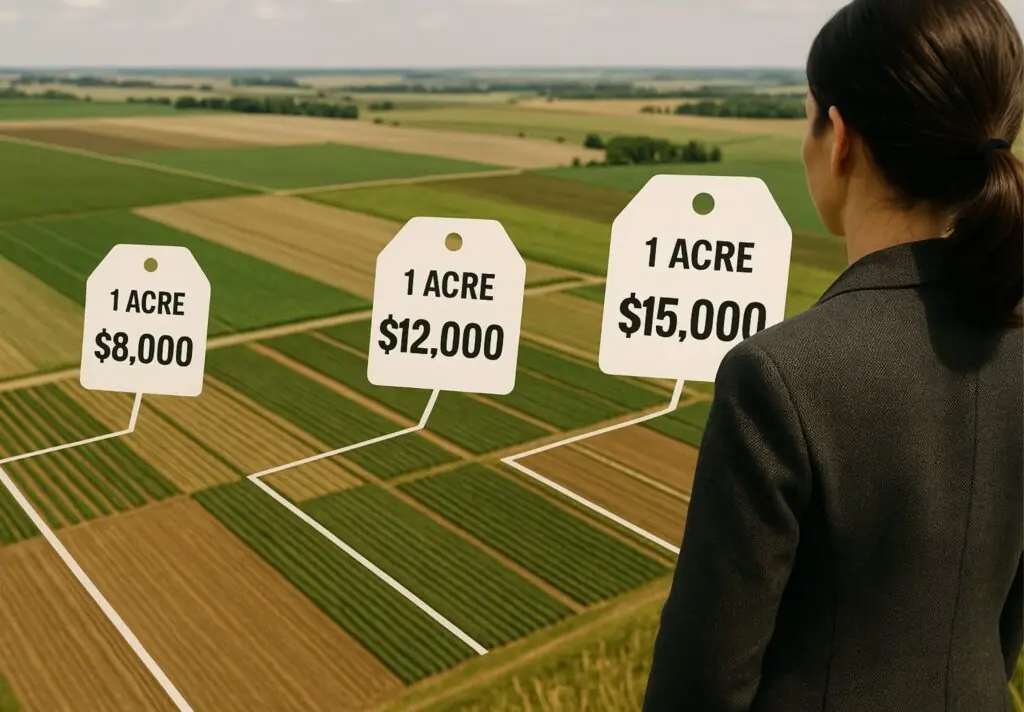When it comes to real estate, not all acres are created equal. The acres value of a property depends on several factors — including location, land use potential, and market timing. In 2025, with demand for rural and semi-rural land steadily rising, sellers have more opportunities than ever to unlock hidden value. But success isn’t automatic — to sell for top dollar, you need a smart strategy.

What Determines an Acre’s Value?
The worth of an acre is influenced by a combination of physical attributes, location, and market forces:
- Location: Proximity to cities, highways, schools, and attractions can significantly raise value.
- Topography: Flat, usable land is more desirable than steep or rocky terrain.
- Access & Utilities: Paved road access, electricity, and water hookups increase marketability.
- Zoning: Determines how the land can be used — residential, agricultural, commercial, or mixed-use.
- Market Conditions: Local supply and demand trends directly impact pricing.
Why Value Varies by Region and Use
An acre in rural West Texas might sell for around $4,000, while an acre in suburban Austin can reach $75,000 or more. The intended use — whether for farming, residential development, or commercial projects — plays a major role in determining its market worth.
Step 1 — Research Local Market Trends
Before listing your property, study local price patterns.
- Compare regional price per acre using online land sales data.
- Identify seasonal selling patterns — spring and summer often bring more buyers.
Step 2 — Highlight Unique Property Features
Land buyers pay more for properties with standout attributes.
- Scenic views, water access, and road frontage can boost value by 10–30%.
- Soil quality matters for agricultural buyers — get it tested and market the results.
Step 3 — Improve Your Land Before Selling
Simple upgrades can yield significant returns.
- Clear overgrown areas to make the property visually appealing.
- Install fencing to define boundaries and enhance security.
- Add basic utilities like electricity or a water well to make the land ready for development.
Step 4 — Understand Zoning and Development Potential
Rezoning can dramatically increase acres value.
- Research rezoning opportunities with your county’s planning department.
- Explore mixed-use or commercial conversions for higher ROI.
Step 5 — Smart Pricing Strategies
Avoid pricing too high — buyers won’t bite, and your land could sit unsold for months.
- Use comparable sales (comps) to set a competitive yet profitable price.
- Consider tiered pricing if selling multiple parcels.
Step 6 — Market to the Right Buyers
Different buyers value land differently.
- Investors look for appreciation potential.
- End users want build-ready property.
- Use both online platforms (LandWatch, Zillow, MLS) and offline marketing (local newspapers, land auctions).
Step 7 — Negotiate Like a Pro
- Create urgency by mentioning other interested buyers — but don’t bluff.
- Know your bottom line and when to walk away.
Step 8 — Factor in Tax Implications
- Capital gains tax can impact your net profit.
- Investigate agricultural exemptions that reduce annual property taxes until you sell.
Step 9 — Work with Specialists
- A land-specific real estate agent understands your market better than a general residential realtor.
- Use a licensed appraiser and surveyor for accurate value assessments.
Step 10 — Time the Sale for Maximum Profit
- Watch interest rates — lower rates often mean more buyers.
- In some cases, holding land for a year or two can yield higher returns if development is expanding nearby.
Maximizing acres value isn’t just about selling at the right price — it’s about selling at the right time, to the right buyer, with the right strategy. Whether your land is one acre or one hundred, applying these smart-selling techniques can make the difference between an average deal and an exceptional one. Consult our office for selling your properties.